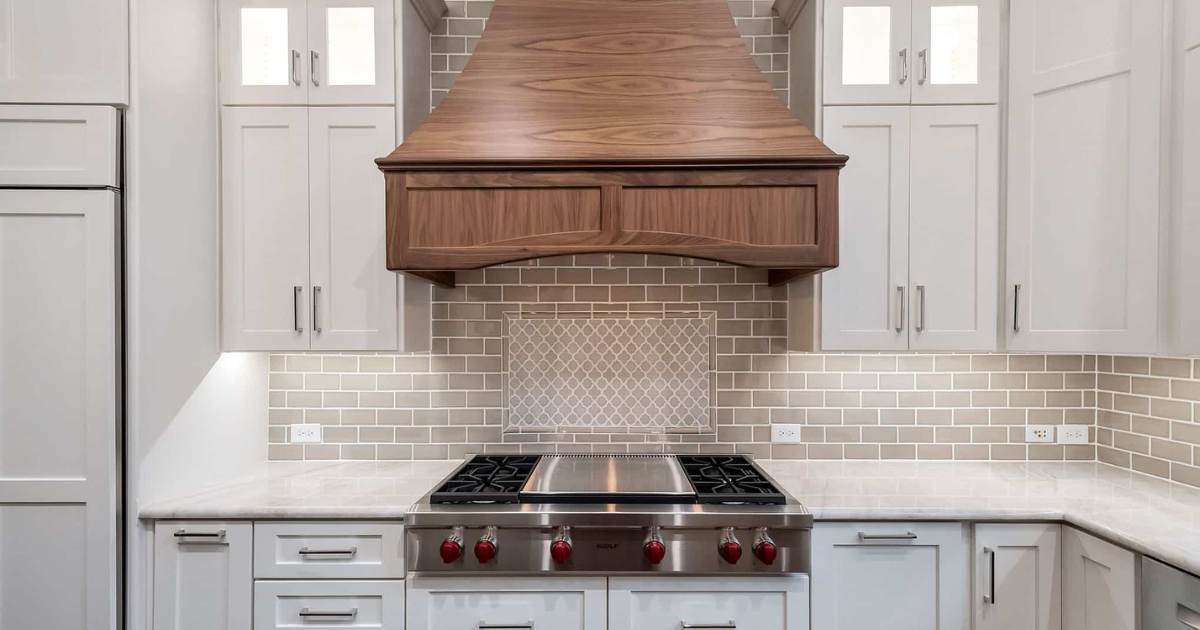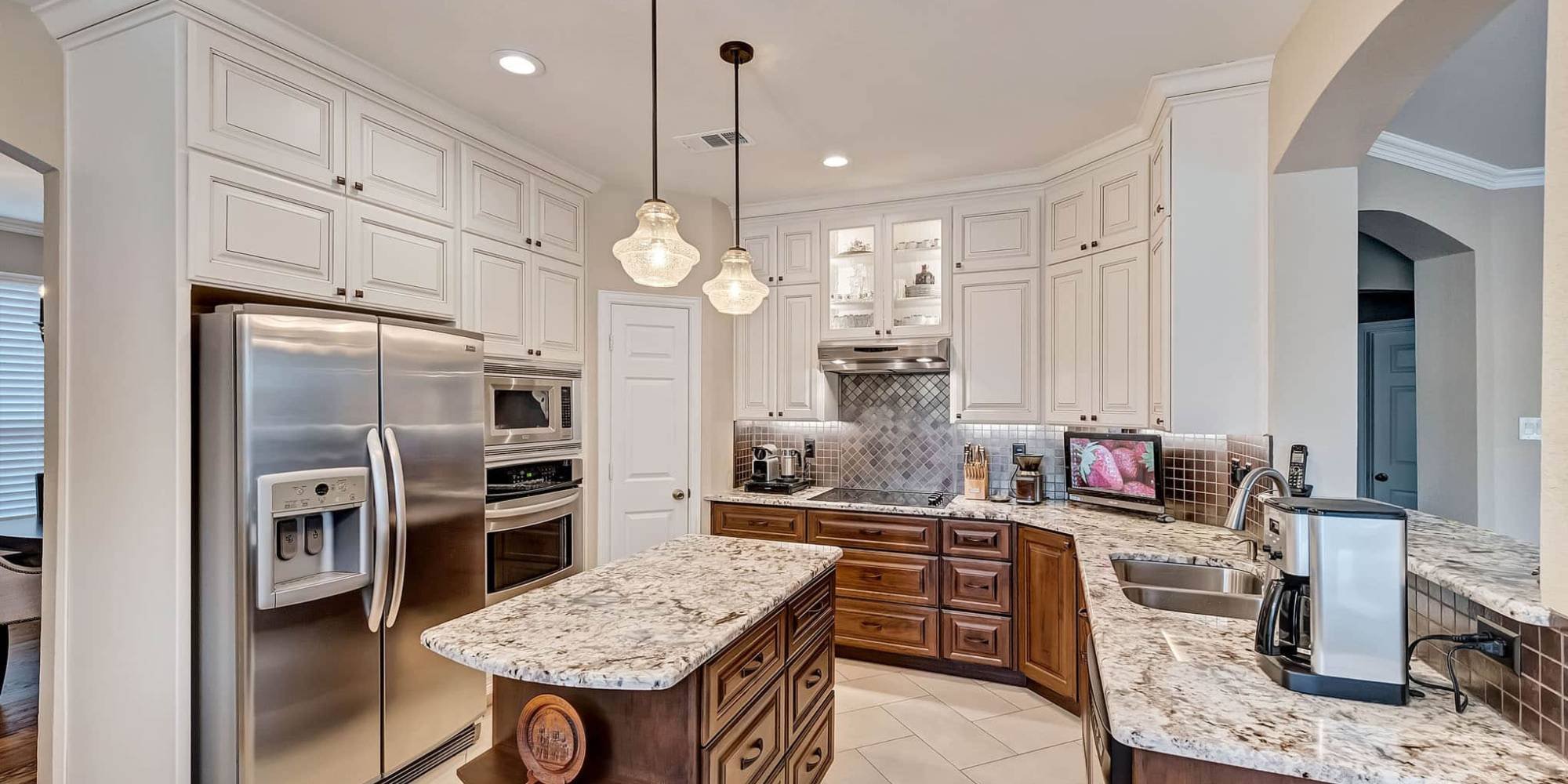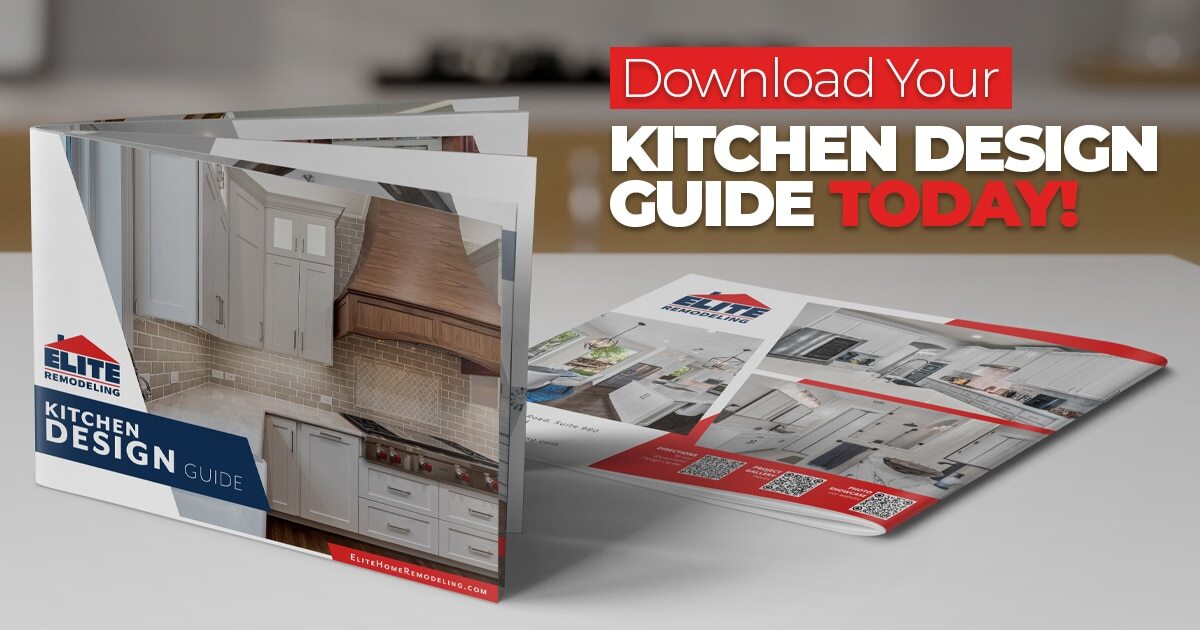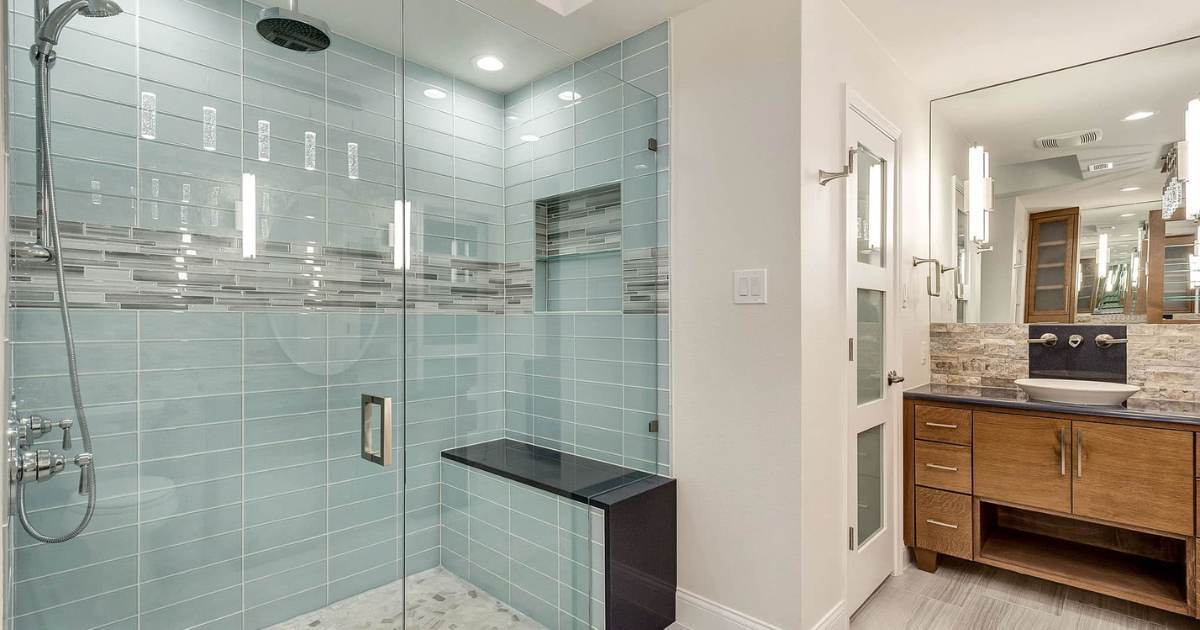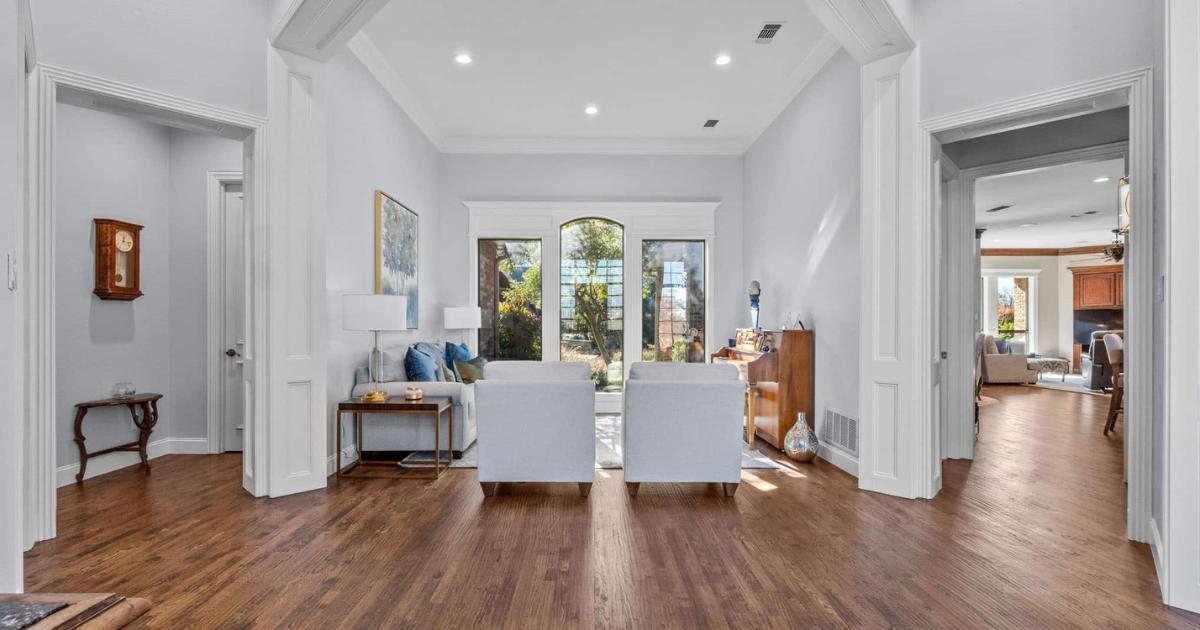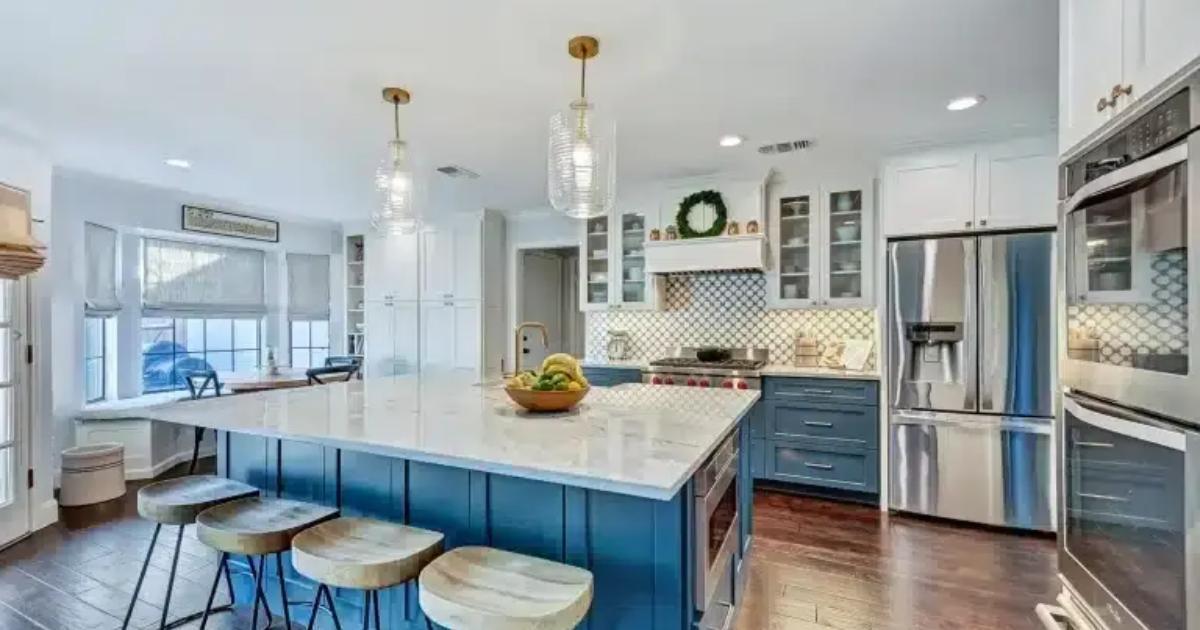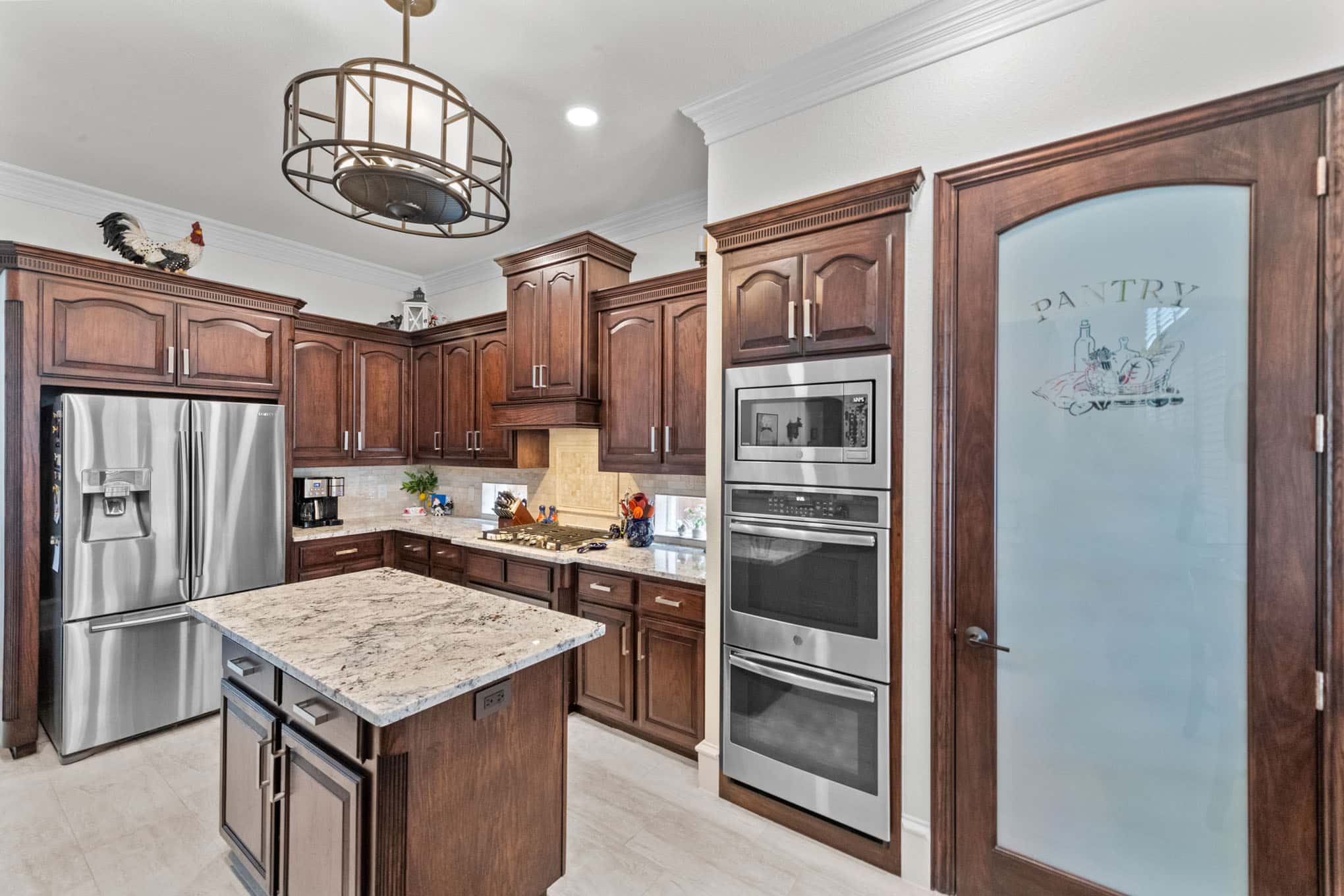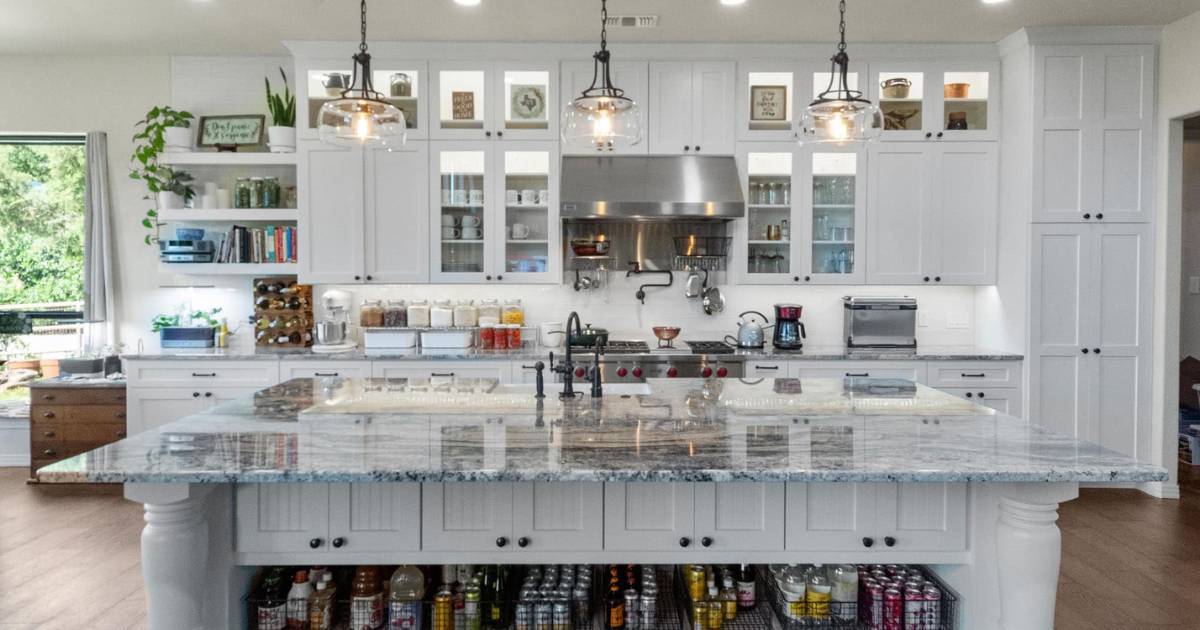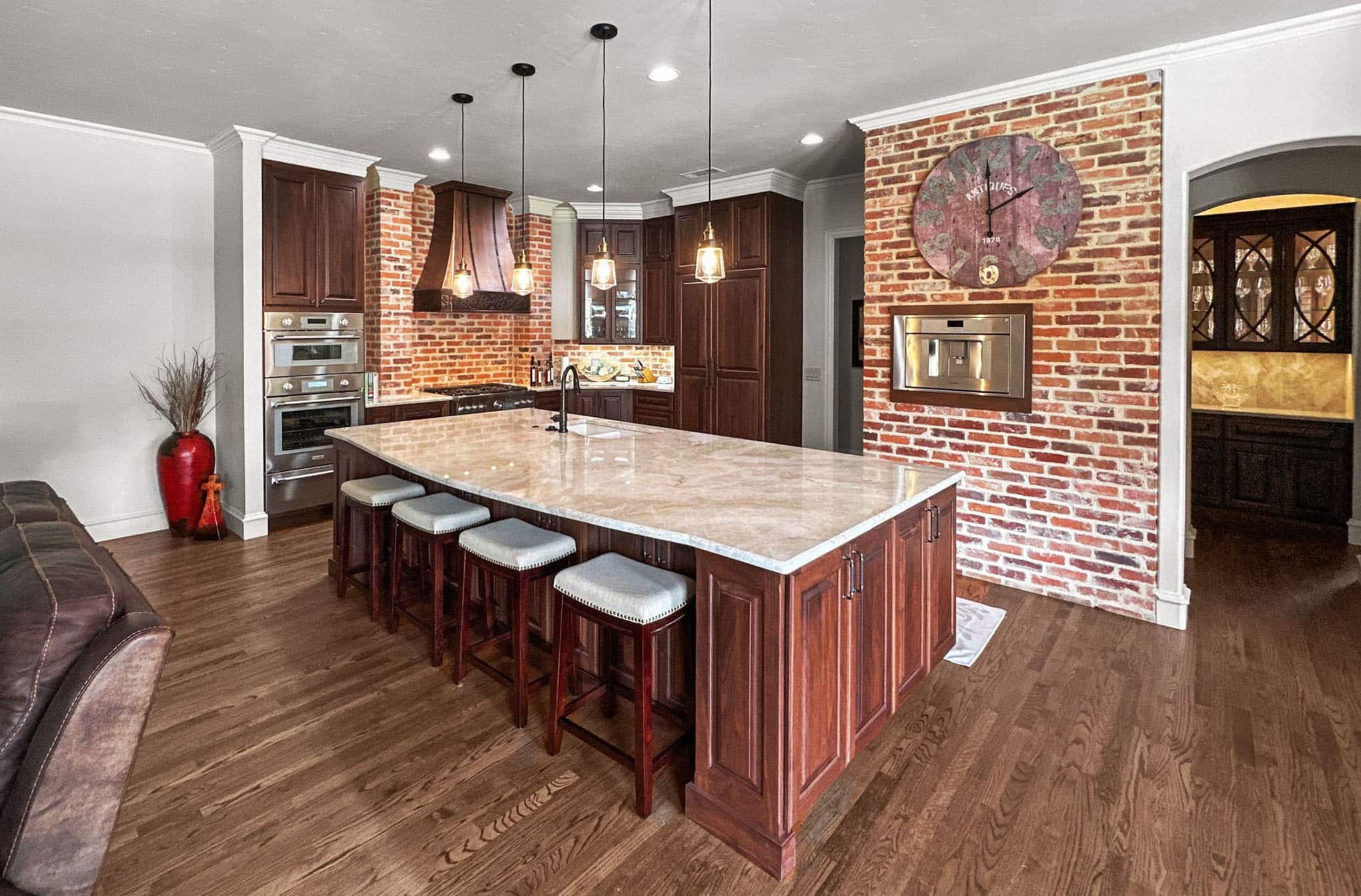The kitchen should be a place of joy, connection, and comfort at every stage of life. With the right accessibility remodeling design choices, you can create a safe and stylish space.
This guide shares 10 smart aging-in-place kitchen design tips for Frisco homes. From barrier-free layouts and universal design to safe appliances, slip-resistant flooring, and clever storage, you’ll discover how to create a kitchen that supports independence, safety, and style.
On this page:
How Should Kitchens Be Designed for Aging in Place?
1. Design with Universal Principles for Everyone’s Comfort
2. Create a Barrier-Free Layout for Easy Movement
3. Lower Counters and Cabinets for Accessibility
4. Choose Appliances with Safety and Convenience in Mind
5. Add Task Lighting to Reduce Eye Strain
6. Focus on Flooring That’s Safe and Slip-Resistant
7. Simplify Storage for Everyday Use
8. Incorporate Smart but Simple Kitchen Technology
9. Blend Style with Function for Long-Term Enjoyment
10. Work with Frisco Aging-in-Place Kitchen Remodeling Experts for Peace of Mind
How Should Kitchens Be Designed for Aging in Place?
1. Design with Universal Principles for Everyone’s Comfort
When we think about kitchen design, we often picture style or storage, but the foundation of a great aging-in-place kitchen is accessibility for everyone.
Universal design kitchen ideas aren’t just for seniors; they make life easier for children, guests, and adults of all ages. By planning with universal design, you create a space that feels welcoming, intuitive, and comfortable, no matter who’s using it.
Smart universal features include:
-
Wider pathways between counters and islands (36–42 inches)
-
Lever or touchless faucet handles
-
Varied counter heights for sitting or standing use
-
Pull-out cutting boards or prep stations at accessible levels
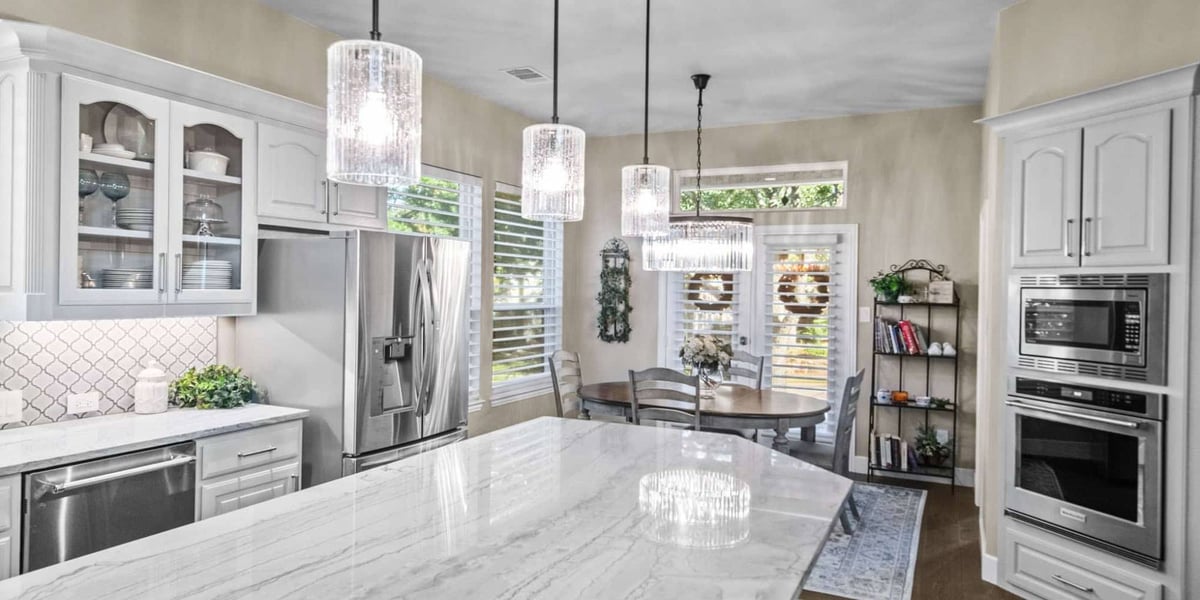
2. Create a Barrier-Free Layout for Easy Movement
The kitchen is one of the busiest rooms in the house, and often the most crowded.
As we age, narrow walkways and cluttered spaces become real safety concerns. A barrier-free kitchen layout reduces tripping hazards and makes it easier for people using wheelchairs, walkers, or mobility aids to move freely.
Think of it as creating open “lanes” for safe cooking, cleaning, and gathering.
Consider:
-
An open floor plan that flows seamlessly into the dining or living area
-
Lower thresholds or no-step entries into the kitchen
-
Wide, roll-under sinks and cooktops for seated use
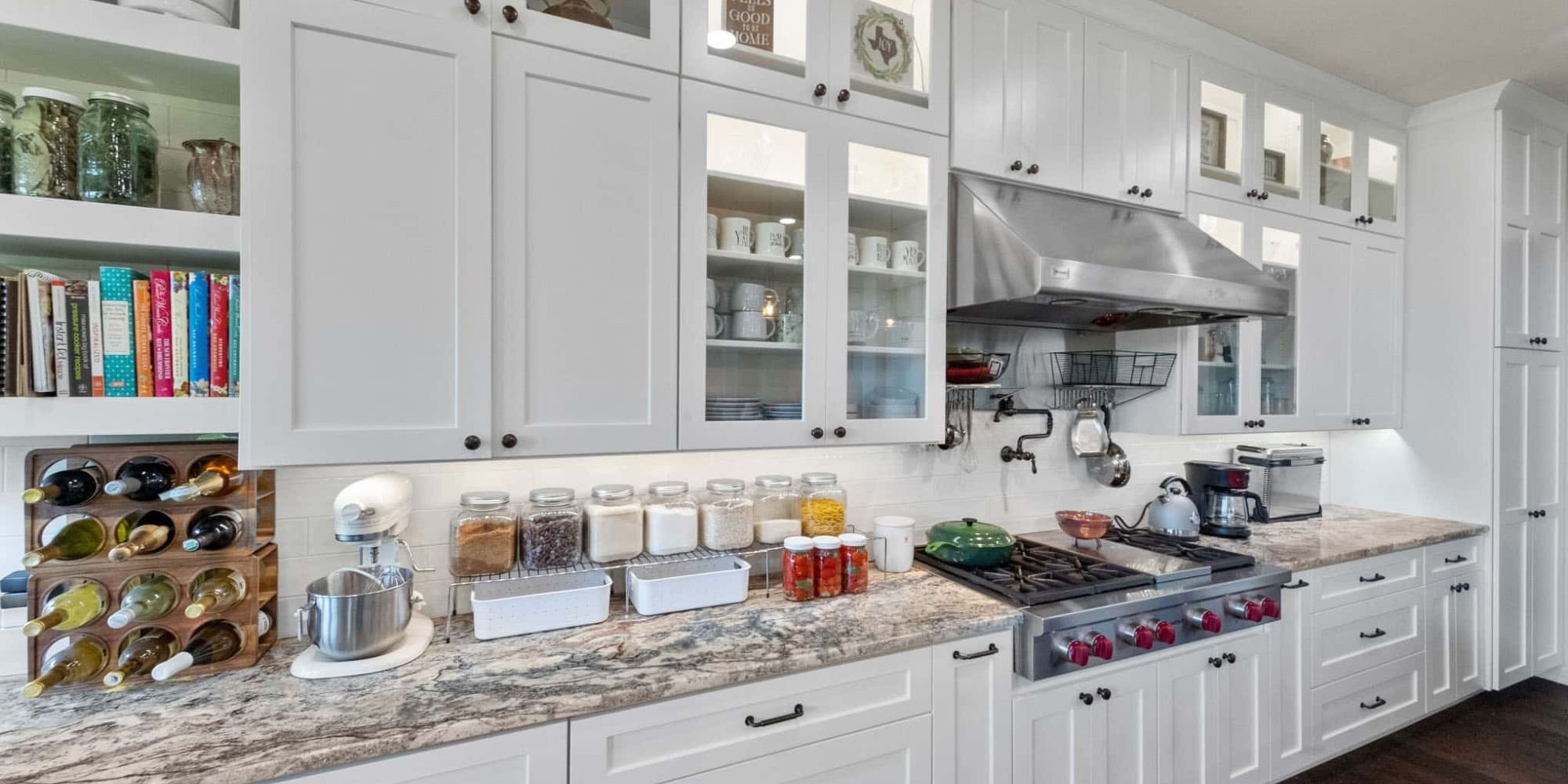
3. Lower Counters and Cabinets for Accessibility
Reaching up into tall cabinets or leaning down into deep ones can be both exhausting and dangerous. By bringing workspaces and storage closer to arm’s reach, you make cooking and meal prep easier while reducing physical strain.
A kitchen remodeled with accessible counters and cabinets keeps everything close at hand, turning meal prep into a joy instead of a challenge.
Practical ideas:
-
Pull-down shelving in upper cabinets
-
Counters at multiple heights to accommodate seated and standing prep
-
Lazy Susans and deep pull-out drawers for easy access to pots and pans
4. Choose Appliances with Safety and Convenience in Mind
Appliances are at the heart of any kitchen, but not all are designed with aging in place in mind. A stove that requires bending or a fridge that’s hard to open can create daily frustration and a lot of disappointment.
When you select senior-friendly appliances, you’re not only improving convenience, you’re also preventing accidents. The right appliances make cooking safer, more enjoyable, and much less stressful.
Look for:
-
Wall ovens installed at arm’s height (no more bending down)
-
Side-opening oven doors
-
Induction cooktops that reduce burn risk
-
Refrigerators with pull-out drawers or French doors
-
Dishwashers with elevated racks for easier loading and unloading
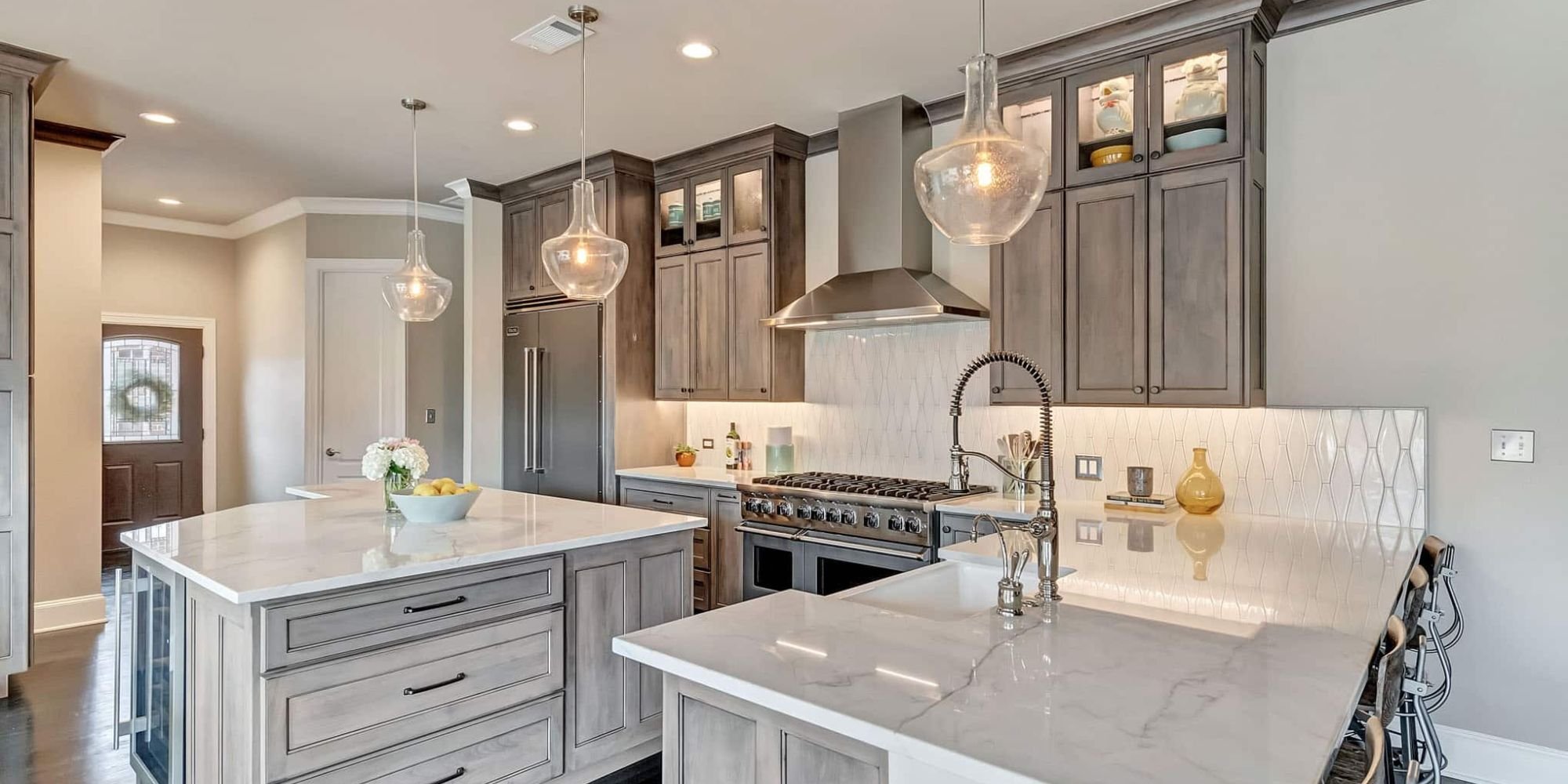
5. Add Task Lighting to Reduce Eye Strain
As vision naturally changes with age, dim or shadowy spaces become harder to navigate.
Adding layers of lighting ensures you can see clearly while chopping, cooking, and cleaning. A well-lit kitchen reduces eye strain, minimizes accidents, and makes everyday tasks feel as easy as they should.
Helpful upgrades:
-
Under-cabinet lighting to brighten counters
-
Pendant lights over islands or prep stations
-
Motion-activated nightlights for late-night kitchen stops
-
Large windows for natural light whenever possible
6. Focus on Flooring That’s Safe and Slip-Resistant
Kitchens see spills, splashes, and heavy traffic, making flooring one of the biggest safety factors in aging in place. Slick or uneven flooring can lead to serious falls, while overly hard flooring can make standing for long periods uncomfortable.
Choosing the right non-slip kitchen flooring ensures your kitchen feels safe and supportive every time you step inside.
Great options:
-
Textured vinyl or laminate flooring
-
Slip-resistant tile with matte finishes
-
Cork or rubber flooring for cushioning and safety
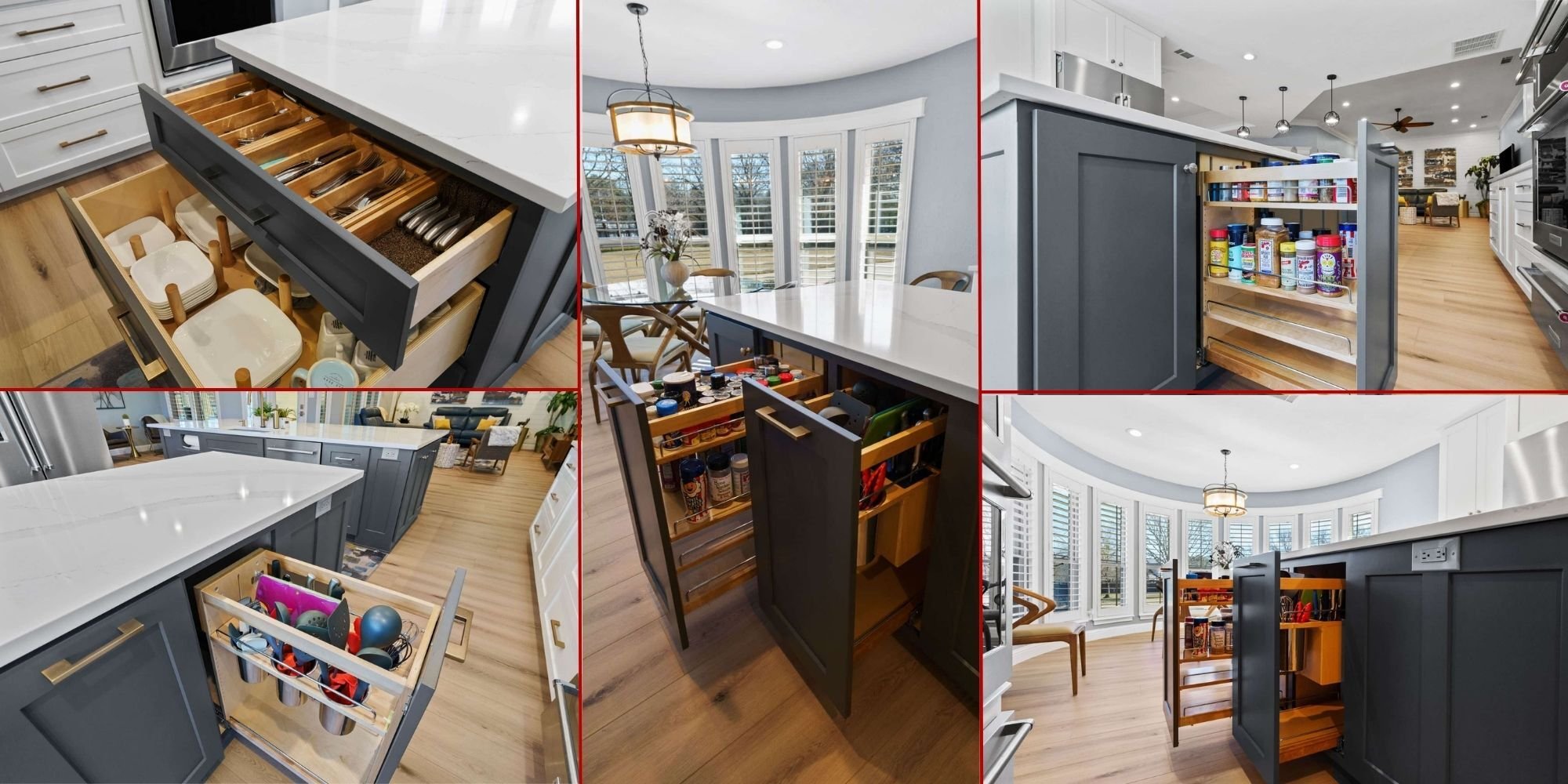
7. Simplify Storage for Everyday Use
Storage is one of the most important considerations for aging in place. Heavy pots, awkward corner cabinets, and cluttered pantries can all become daily hurdles.
With smart, accessible storage solutions, you make it easier to cook and clean without straining your back, shoulders, or knees.
Smart storage solutions:
-
Roll-out pantry shelves
-
Pull-out baskets for dry goods
-
Drawers instead of overhead cabinets for dishes
-
Soft-close hardware for easy, quiet use
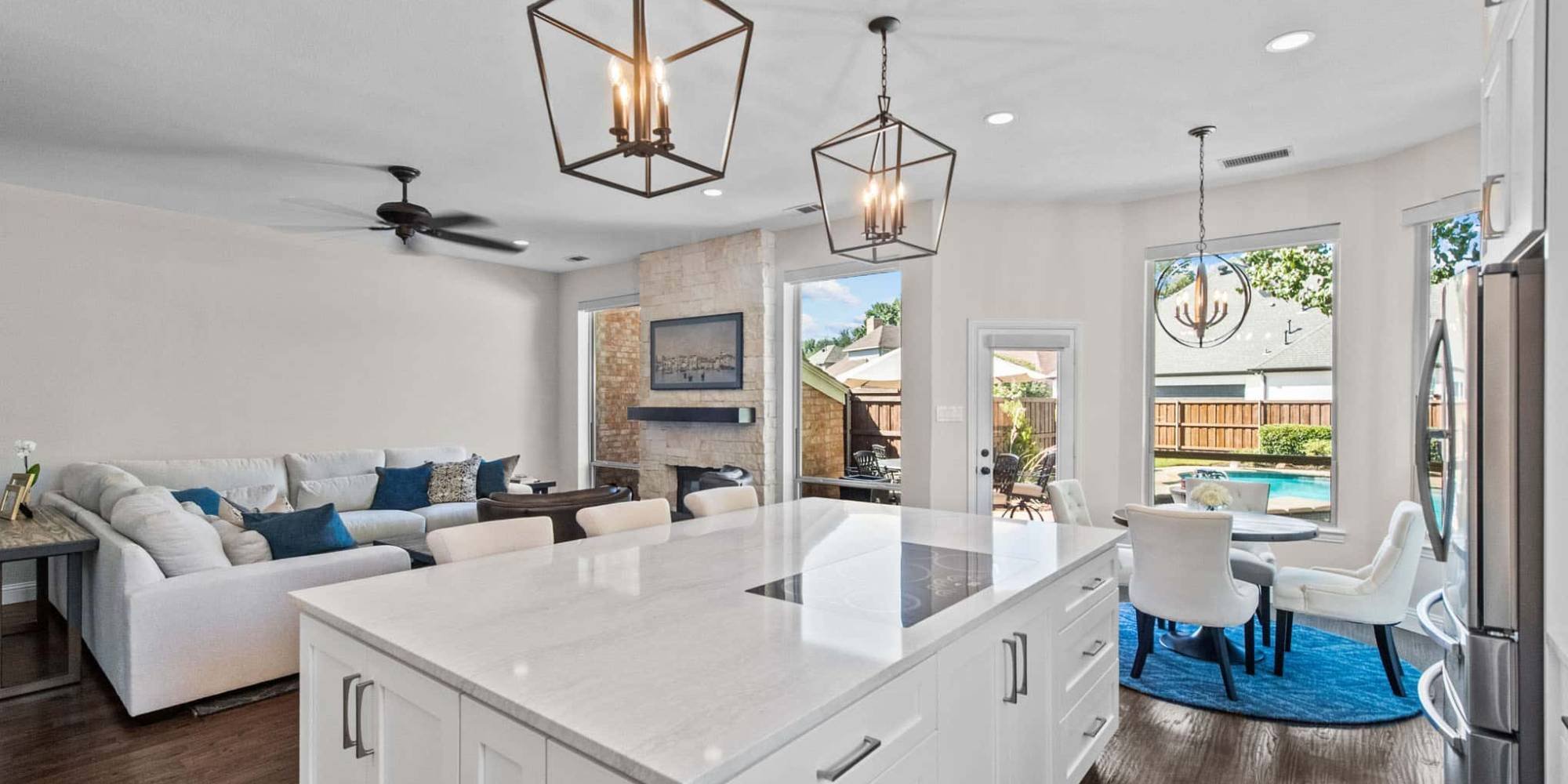
8. Incorporate Smart but Simple Kitchen Technology
The best smart kitchen technology for seniors is intuitive and easy to use, simplifying daily routines and adding a layer of safety. From voice-controlled lights to auto-shutoff appliances, these tools help make independent living more convenient and stress-free.
Helpful upgrades:
-
Touch-activated faucets
-
Voice-controlled lighting or appliances
-
Smart refrigerators that monitor groceries and expiration dates
-
Induction cooktops with auto-shutoff for safety
9. Blend Style with Function for Long-Term Enjoyment
An aging-in-place kitchen should be practical, but it should also be beautiful. After all, the kitchen is still the heart of the home where meals are shared, stories are told, and life happens.
Thankfully, luxury accessible kitchen design makes it possible to enjoy both safety and elegance in one space. These upgrades ensure your kitchen looks great today and continues to serve you well into the future.
Luxury design ideas:
-
Open shelving paired with stylish cabinetry
-
Contrasting countertop and cabinet colors for visual clarity
-
Decorative hardware that doubles as easy-grip pulls
-
Durable, elegant finishes that will look great for a long time
10. Work with Frisco Aging-in-Place Kitchen Remodeling Experts for Peace of Mind
Designing an aging-in-place kitchen isn't something that just any contractor can pull off. It requires experience, knowledge of accessibility standards, and an understanding of how needs change over time.
Working with Frisco kitchen remodeling experts ensures your kitchen is not only safe and functional but also personalized to your lifestyle. With a trusted team, you can move forward with confidence, knowing your kitchen remodel will support you for years to come.
Why it matters:
-
Local expertise means understanding codes and best practices
-
You’ll get tailored suggestions for your home and lifestyle
-
Experts can help prioritize upgrades for your budget, design goals, and changing needs
-
Most importantly, you’ll feel supported throughout the process
Ready for a Kitchen That Supports You in All Life's Chapters?
An aging-in-place kitchen remodel is meant to create a space that makes daily living easier, safer, and more joyful.
By planning ahead, you can enjoy a kitchen that evolves with your needs while keeping its beauty intact. Every choice you make now will pay off in confidence, comfort, and independence later.
Ready to take the next step? Partner with our Frisco kitchen remodeling experts at Elite Remodeling today and design a kitchen that truly grows with you. Reach out to us, and let's talk about the kitchen that will support you well into the future.

